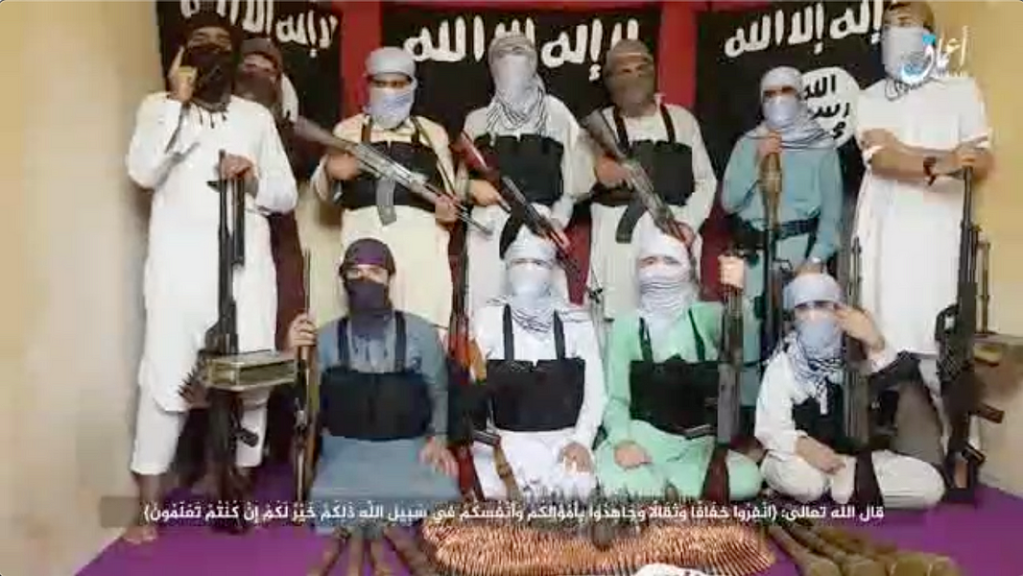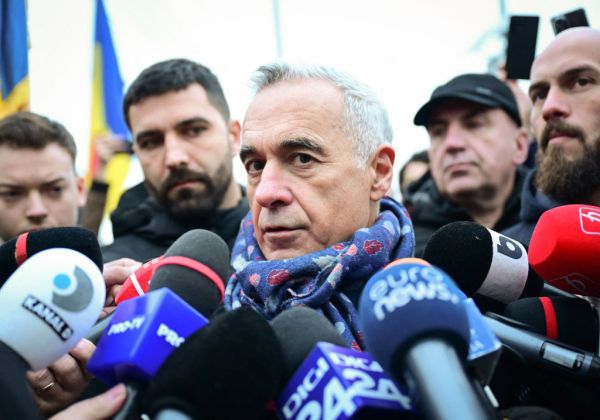On Sunday, an ISIS suicide bomber drove his explosive-laden vehicle into the front gate of the main prison in Jalalabad—the capital of Afghanistan’s eastern Nangarhar province. Shortly after the so-called “martyr” detonated the bomb, his jihadist comrades stormed the prison from multiple sides. Their siege was finally put to an end on Monday, after the terrorists battled security forces for upward of 20 hours. It was the most sophisticated operation claimed by ISIS in Afghanistan in some time—perhaps ever. Days later, it still isn’t clear how many ISIS members and other jihadists are now on the lam. That Afghan government initially trumpeted its supposed success in rounding up the escapees, but then conceded that hundreds are still at large.
ISIS has a history of orchestrating jailbreaks. The group has made such operations a global priority and it’s easy to see why. There’s no better way for ISIS and other jihadist organizations to replenish their ranks than by reincorporating dedicated cadres. Time and again, ISIS and its predecessor organizations have received a boost from those who returned to the fight. The former caliphate’s leaders know this history well, as many of them were once imprisoned. They have repeatedly reminded their men that their detained brethren shouldn’t be forgotten. And jail raids like the one in Jalalabad send a clear message to the jihadists who have been captured: Your co-religionists will not abandon you. It’s a message that is intended to boost morale, especially after the group has suffered multiple setbacks.
ISIS celebrated the Jalalabad jailbreak throughout the week, producing a stream of propaganda to highlight the raid. This messaging included self-serving “news reports,” an infographic trumpeting the operation’s success, and a video of the attack team responsible for the operation. A screen shot from the video can be seen above.
Normally, this would be a straightforward story. I’d make the point that the prison assault in Jalalabad illustrates how ISIS is still very much alive, even though President Trump and his 2020 rival, former Vice President Joe Biden, are determined to “end” America’s “forever wars.” It’s easy to extricate American forces from, well, everywhere. It’s not so easy to contain the jihadists while doing so. See the rise of ISIS after America’s withdrawal from Iraq in 2011.
But there’s a twist in this story that’s worth discussing. The Afghan government alleges that the so-called Khorasan province of the self-declared caliphate (known as ISIS-K)—the outfit responsible for the attack in Jalalabad and a series of others throughout Afghanistan—is basically acting as a front group for the Taliban.
The Afghans argue that the Taliban, and specifically the Haqqani Network (an integral part of the Taliban’s command structure), is using ISIS-K as a cutout for operations it doesn’t want to be held responsible for conducting. This includes certain attacks targeting civilians, as well as operations that may appear to violate the spirit of the Feb. 29 withdrawal deal between the U.S. and the Taliban.
Is this true? The answer may not be as simple as yes or no. We’ll look at some of the evidence. But first, some context is necessary.
ISIS and the Taliban are jihadist rivals. When ISIS moved into Afghanistan in 2014 and 2015, the group loudly rejected the Taliban’s legitimacy. Now that the caliphate was in town, ISIS argued, there was no need for the Taliban’s Islamic Emirate. That emirate was toppled by the U.S. and its allies in 2001. The Taliban and al-Qaeda have been fighting to resurrect it ever since.
This was no small dispute. ISIS regularly denounces the Taliban in its literature, while also criticizing al-Qaeda’s unbroken alliance with the Taliban. The two sides have fought one another in multiple areas, with al-Qaeda supporting the Taliban’s offensive against ISIS in eastern Afghanistan, including Nangarhar—the same province where the jailbreak occurred.
In short, there is a lot of evidence showing that ISIS has tried (and failed) to undercut the Taliban’s jihadist authority within Afghanistan. The Taliban, including the Haqqanis, and al-Qaeda did not take this threat lightly. But allegiances can be fluid in Afghanistan—a country that is still covered by the fog of war nearly 19 years after the 9/11 hijackings. So, we can’t dismiss the possibility that there is more to the ISIS-K story than meets the eye.
After the jailbreak earlier this week, Masoud Andarabi, Afghanistan’s acting interior minister, claimed on Twitter that the new leader of ISIS-K is a man known as “Shahab Almahajir” (really Shahab Al-Muhajir), and that he is a “member” of the Haqqani network. Andarabi claimed further that the Taliban and Haqqani network “carry out their terrorism on a daily basis across [Afghanistan] & when their terrorist activities [do] not suit them politically they rebrand it under” ISIS-K. Andarabi also claims the Afghan government has “solid intelligence” that a local Taliban commander was behind the Jalalabad jailbreak.
These are significant allegations—but thus far, we cannot verify them. For starters, little is publicly known about Shahab Al-Muhajir. Assuming he is the current ISIS-K leader, it is possible that he defected from the Haqqanis. One way ISIS-K initially got a foothold in the region was by poaching from the Taliban and other affiliated jihadist groups. Who’s to say that the obscure “Shahab al-Muhajir” (an alias indicating that he is a foreign fighter) didn’t simply leave the Haqqanis’ ranks?
Mujib Mashal of the the New York Times recently reported that the Afghan government has used biometrics—fingerprints and eye scans—to profile detained ISIS-K members. One Afghan official told Mashal that the ISIS-K prisoners “are often already in the system as having been previously arrested or associated with attacks carried out by the Haqqani network, a lethal arm of the Taliban.” That may very well be true. But again, how do we know they aren’t simply defectors?
The allegation that the Haqqanis are using ISIS-K as a cutout, of sorts, was also raised by a U.N. Security Council monitoring team earlier this year. That team of experts regularly scrutinizes the jihadist underworld. They reported in late May: “It [ISIS-K] remains capable of mounting attacks in various parts of the country, including Kabul, but some of those claimed may have arisen wholly or partly from a tactical accommodation with the Haqqani Network.” The U.N. Security Council’s experts explained in a footnote that they had “viewed communication intercepts following ISIS-K claimed attacks that were identified as traceable to known members of the Haqqani Network.” (It is possible, if not likely, that this intelligence was supplied by the Afghan government.)
In other words, the U.N. Security Council’s experts concluded that there is at least some evidence showing that the Haqqanis have knowingly facilitated ISIS-K attacks.
After the assault in Nangarhar on Aug. 2, I reached out to several U.S. counterterrorism officials for their take on the matter. None of them doubts that ISIS-K was responsible for the Nangarhar prison break. But they all agreed that there are reasons to think the Taliban, including the Haqqani Network, has helped facilitate some of ISIS-K’s attacks in Kabul and possibly elsewhere. They didn’t provide any concrete details, citing classification concerns, but agreed that the Afghan government has a point. The Haqqani Network has dominated jihadist networks in and around Kabul for many years.
Does it really matter which jihadist group is responsible for any given attack? From the Afghan government’s perspective it matters quite a bit.
The Trump administration envisions the Taliban, including the al-Qaeda allied Haqqani Network, as America’s new de facto counterterrorism partner. President Trump, Secretary of State Mike Pompeo and Special Representative Zalmay Khalilzad have trumpeted the Taliban’s supposed counterterrorism assurances in the withdrawal agreement signed on Feb. 29 in Doha.
“I’ll be meeting personally with Taliban leaders in the not-too-distant future,” Trump said on the same day that deal was inked. “And we’ll be very much hoping that they [the Taliban] will be doing what they say they’re going to be doing: They will be killing terrorists. They will be killing some very bad people. They will keep that fight going.”
That is, President Trump and his advisers want Americans to think that the Taliban will now take care of the terrorist problem in Afghanistan. This ignores the fact that the Taliban itself is a terrorist organization. The Haqqani Network, which holds key positions throughout the Taliban’s hierarchy (Sirajuddin Haqqani is one of the Taliban’s deputy emirs) and is responsible for some of the worst attacks in Afghanistan’s history, is a U.S.-designated terrorist organization. The Haqqanis’ decades-long alliance with al-Qaeda is well-documented. There is no publicly available evidence showing this has changed as a result of the deal in Doha.
And now the Afghan government, a team of experts working for the U.N. Security Council and some U.S. officials say the Haqqanis have been secretly facilitating some ISIS-K attacks as well.
The Taliban has kept “that fight going.” But that fight is their jihad. America may want to stop fighting. But that doesn’t mean the Taliban has gotten out of the terrorism business.






Please note that we at The Dispatch hold ourselves, our work, and our commenters to a higher standard than other places on the internet. We welcome comments that foster genuine debate or discussion—including comments critical of us or our work—but responses that include ad hominem attacks on fellow Dispatch members or are intended to stoke fear and anger may be moderated.
You are currently using a limited time guest pass and do not have access to commenting. Consider subscribing to join the conversation.
With your membership, you only have the ability to comment on The Morning Dispatch articles. Consider upgrading to join the conversation everywhere.